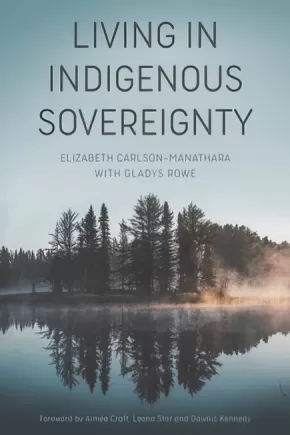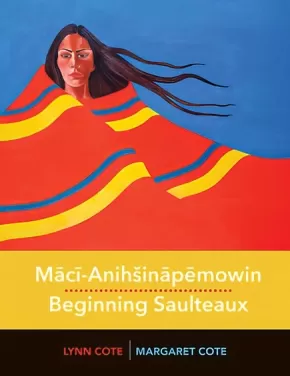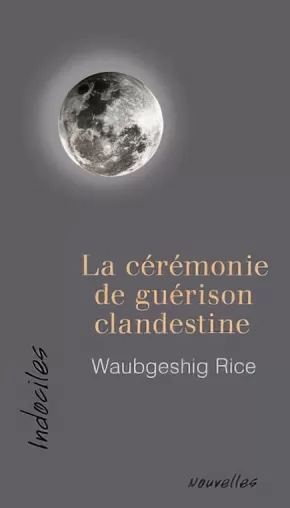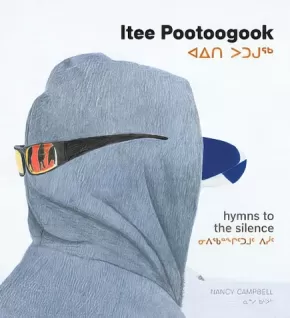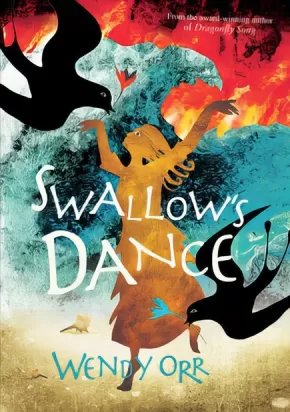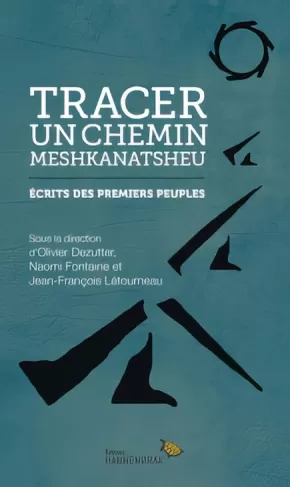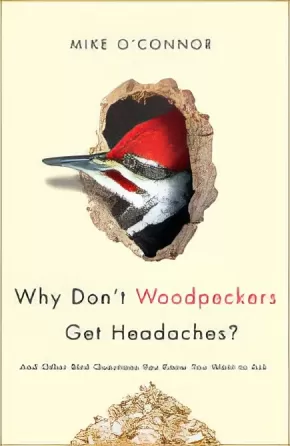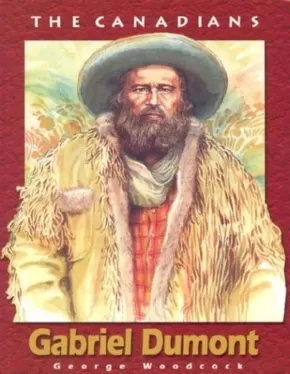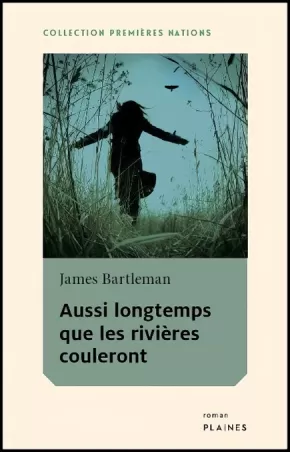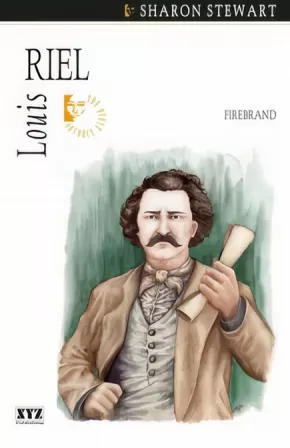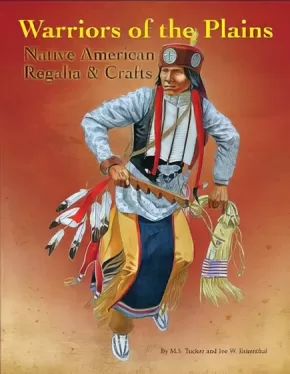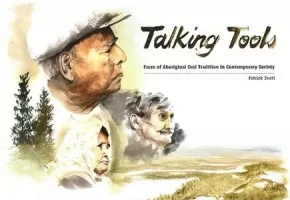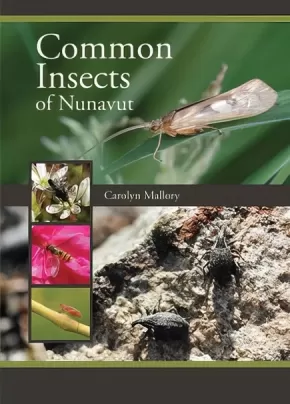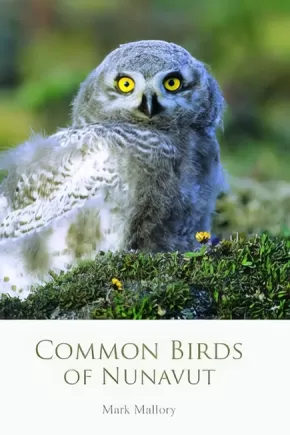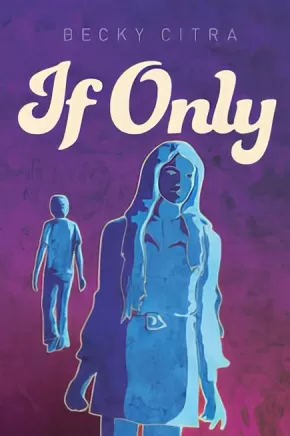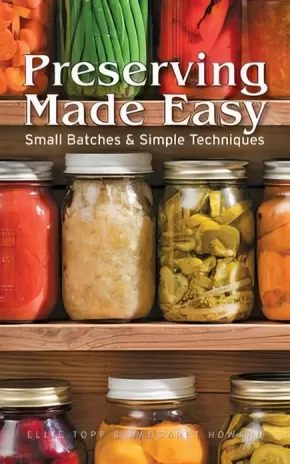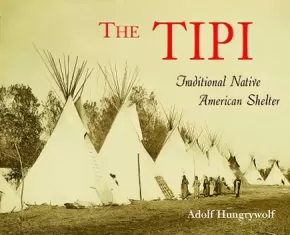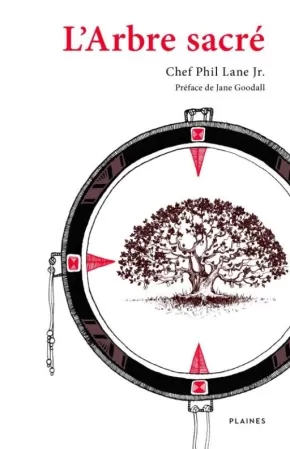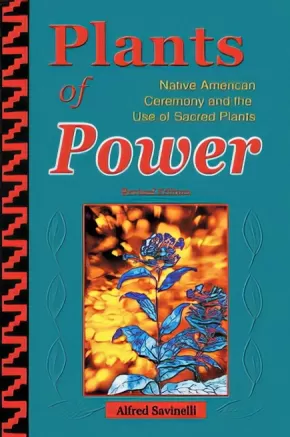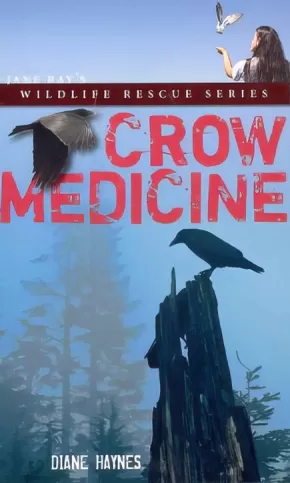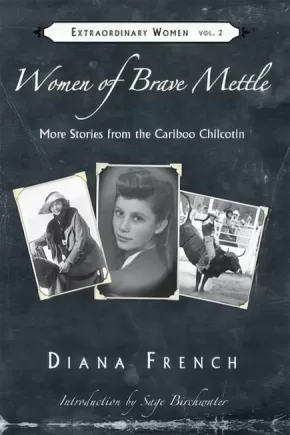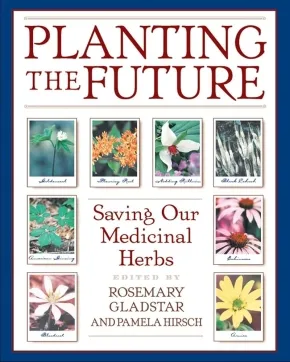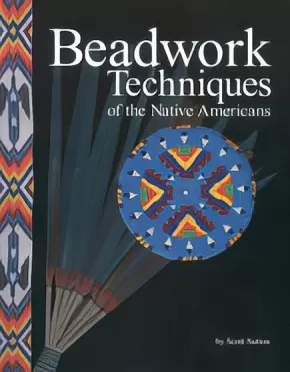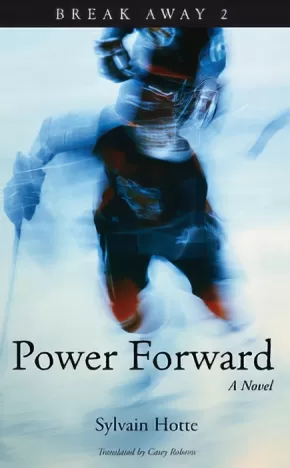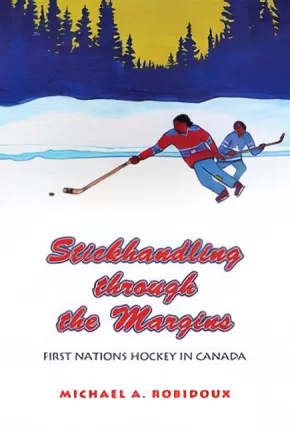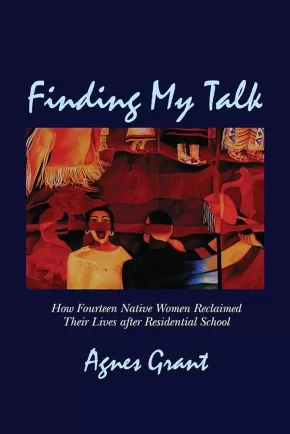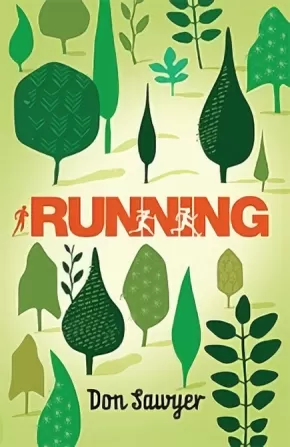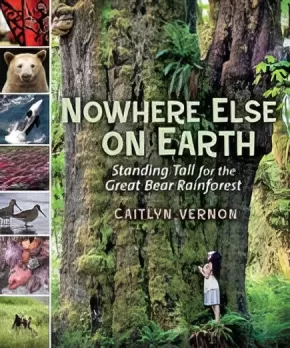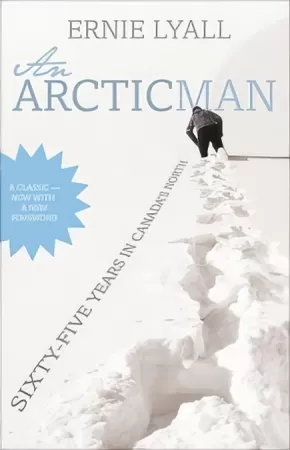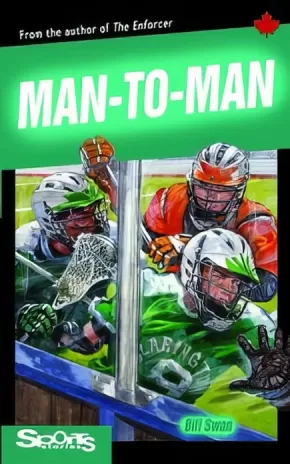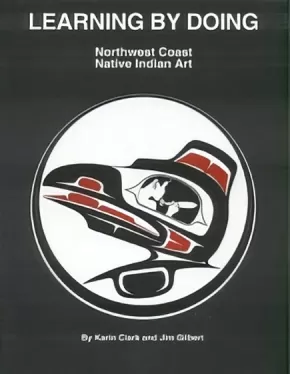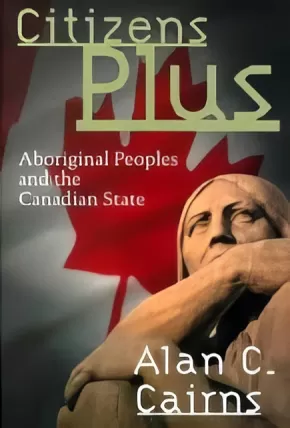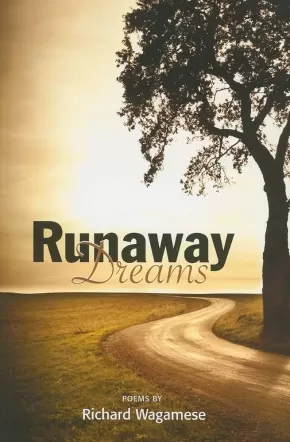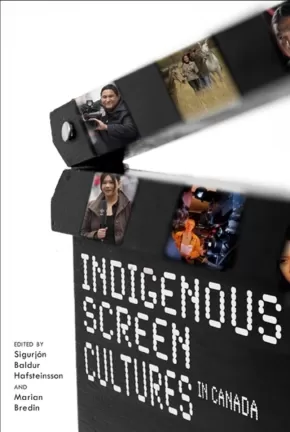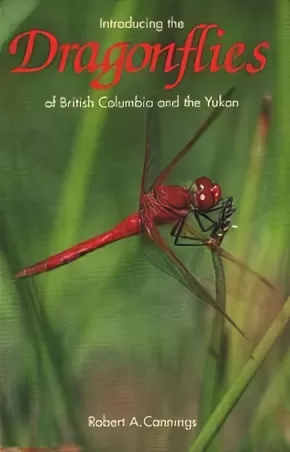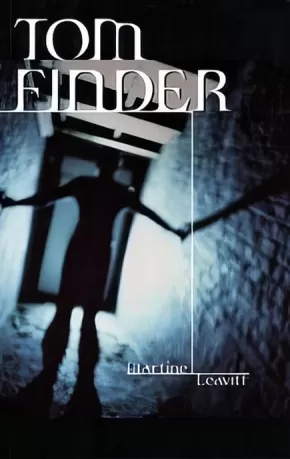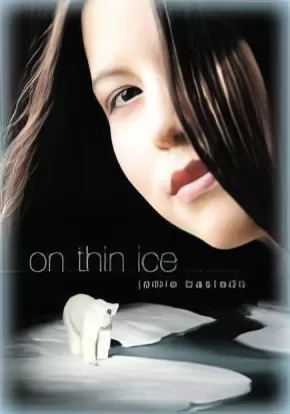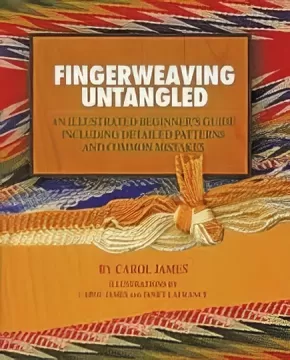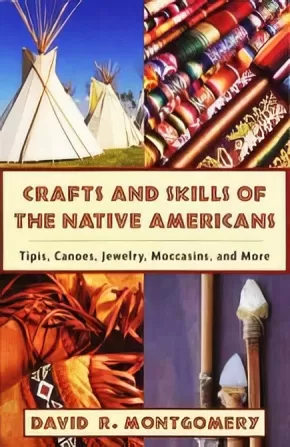
ON SALE
1
-
15
of
53 Results;
Sort By
Go To
of 4
Sale applies to IN-STOCK books only - quantities are provided in the book's title when possible.
Living in Indigenous Sovereignty (10 in Stock) - ON SALE
$22.40 $32.00
Format:
Paperback
Text Content Territories:
Indigenous Canadian;
Grade Levels: 12; University/College;
ISBN / Barcode: 9781773632384
Synopsis:
Synopsis:
In the last decade, the relationship between settler Canadians and Indigenous Peoples has been highlighted by the Truth and Reconciliation Commission, the National Inquiry into Missing and Murdered Indigenous Women and Girls, the Idle No More movement, the Wet'suwet'en struggle against pipeline development and other Indigenous-led struggles for Indigenous sovereignty and decolonization. Increasing numbers of Canadians are beginning to recognize how settler colonialism continues to shape relationships on these lands. With this recognition comes the question many settler Canadians are now asking, what can I do?
Living in Indigenous Sovereignty lifts up the wisdom of Indigenous scholars, activists and knowledge keepers who speak pointedly to what they are asking of non-Indigenous people. It also shares the experiences of thirteen white settler Canadians who are deeply engaged in solidarity work with Indigenous Peoples. Together, these stories offer inspiration and guidance for settler Canadians who wish to live honourably in relationship with Indigenous Peoples, laws and lands. If Canadians truly want to achieve this goal, Carlson and Rowe argue, they will pursue a reorientation of their lives toward "living in Indigenous sovereignty"-- living in an awareness that these are Indigenous lands, containing relationships, laws, protocols, stories, obligations and opportunities that have been understood and practised by Indigenous peoples since time immemorial.
Collectively, these stories will help settler Canadians understand what transformations we must undertake if we are to fundamentally shift our current relations and find a new way forward, together.
Reviews
“A powerful decolonial reflection and call to action for settler peoples to learn how to work in solidarity with Indigenous peoples in ways that are decolonizing not recolonizing. Guided by teachings from Indigenous elders, scholars, and activists about the importance of creating relationships with kindness, humility, mutual respect and reciprocity, non-Indigenous readers can find inspiration in the life stories of settlers who speak frankly about their ongoing struggles to do this work in a good way.” — Paulette Regan, author of Unsettling the Settler Within: Indian Residential Schools, Truth Telling, and Reconciliation in Canada and Senior Researcher/Lead Writer of “Reconciliation,” Volume 6 of the TRC Final Report
“This is the most comprehensive book on anti-colonial practice focused on non-indigenous peoples. It draws on leading scholars and advocates from across the country and incorporates a breadth of concepts that create a solid and encompassing foundation for creating change. By incorporating these ideas, perspectives, experiences and practices, non-Indigenous and Indigenous people will be well prepared for our work and parallel journey ahead.” — Michael Anthony Hart, Vice Provost (Indigenous Engagement), Professor, Faculty of Social Work, University of Calgary, author of Seeking Mino-Pimatisiwin and Wicihitowin
Educator Information
Tables of Contents
Foreword By Aimée Craft, Leona Star and Dawnis Kennedy
Acknowledgments
Introductions
Settler Colonialism and Resistance
Introducing the Narratives
Monique Woroniak
Murray Angus
Steve Heinrichs
Franklin Jones
Orienting Toward Indigenous Sovereignty
Joy Eidse
Adam Barker
Susanne McCrea
Kathi Avery Kinew
Rick Wallace
What Indigenous Peoples Have Asked of Us
John Doe
Silvia Straka
Dave Bleakney
Victoria Freeman
Honourings
Conclusions
Afterword
References
Index
Additional Information
264 pages | 6.00" x 9.00"
Mācī-Anihšināpēmowin / Beginning Saulteaux (10 in Stock) - ON SALE
$30.00 $34.95
Format:
Coil Bound
Text Content Territories:
Indigenous Canadian; First Nations; Anishinaabeg; Ojibway; Saulteaux;
ISBN / Barcode: 9780889777514
Synopsis:
Synopsis:
Mācī-Anihšināpēmowin / Beginning Saulteaux is an introductory look at one of the most widely spoken of all North American Indigenous languages, regionally known as Saulteaux, Ojibway, Ottawa (Odawa), Chippewa, and Algonquian. In an easy-to-use and easy-to-read series of lessons, both designed for self-study or for use in the classroom, Beginning Saulteaux will guide beginners through the language’s grammatical structures and spelling systems, as well as everyday terms and phrases. The book grounds the language in both traditional and contemporary contexts, and sheds light on the Saulteaux world view. For example, there is no word for good-bye in the language, so upon parting people will usually say Kika-wāpamin mīnawā, meaning “I’ll see you again.”
Educator & Series Information
The third in our Indigenous Languages for Beginners series, Beginning Saulteaux is an invaluable resource produced in consultation with Elders, Language Keepers, and community members, and continues our commitment to revitalizing Indigenous languages.
Additional Information
304 pages | 8.50" x 11.00" | Spiral Bound
Standing with Standing Rock: Voices from the #NoDAPL Movement (3 in Stock) - ON SALE
$26.96 $35.95
Editors:
Format:
Paperback
Text Content Territories:
Indigenous American;
Grade Levels: 12; University/College;
ISBN / Barcode: 9781517905361
Synopsis:
Synopsis:
Dispatches of radical political engagement from people taking a stand against the Dakota Access Pipeline.
It is prophecy. A Black Snake will spread itself across the land, bringing destruction while uniting Indigenous nations. The Dakota Access Pipeline is the Black Snake, crossing the Missouri River north of the Standing Rock Indian Reservation. The oil pipeline united communities along its path—from North Dakota, South Dakota, Iowa, and Illinois—and galvanized a twenty-first-century Indigenous resistance movement marching under the banner Mni Wiconi—Water Is Life! Standing Rock youth issued a call, and millions around the world and thousands of Water Protectors from more than three hundred Native nations answered. Amid the movement to protect the land and the water that millions depend on for life, the Oceti Sakowin (the Dakota, Nakota, and Lakota people) reunited. A nation was reborn with renewed power to protect the environment and support Indigenous grassroots education and organizing. This book assembles the multitude of voices of writers, thinkers, artists, and activists from that movement.
Through poetry and prose, essays, photography, interviews, and polemical interventions, the contributors, including leaders of the Standing Rock movement, reflect on Indigenous history and politics and on the movement’s significance. Their work challenges our understanding of colonial history not simply as “lessons learned” but as essential guideposts for current and future activism.
Contributors: Dave Archambault II, Natalie Avalos, Vanessa Bowen, Alleen Brown, Kevin Bruyneel, Tomoki Mari Birkett, Troy Cochrane, Michelle L. Cook, Deborah Cowen, Andrew Curley, Martin Danyluk, Jaskiran Dhillon, Roxanne Dunbar-Ortiz, Liz Ellis, Nick Estes, Marcella Gilbert, Sandy Grande, Craig Howe, Elise Hunchuck, Michelle Latimer, Layli Long Soldier, David Uahikeaikalei‘ohu Maile, Jason Mancini, Sarah Sunshine Manning, Katie Mazer, Teresa Montoya, Chris Newell, The NYC Stands with Standing Rock Collective, Jeffrey Ostler, Will Parrish, Shiri Pasternak, endawnis Spears, Alice Speri, Anne Spice, Kim TallBear, Mark L. Tilsen, Edward Valandra, Joel Waters, Tyler Young.
Reviews
"As our songs and prayers echo across the prairie, we need the public to see that in standing up for our rights, we do so on behalf of the millions of Americans who will be affected by this pipeline."—David Archambault II, from the interior
"There is no alternative to water. There is no alternative to this Earth. This fight has become my life, and it’s not over. I think this is only the beginning for me, for all of us. Do you want a future for your children and grandchildren? If you want them to have a future then stand with Standing Rock because this is just the beginning of a revolution."—Zaysha Grinnell, from the interior
"We will put our best warriors in the front. We are the vanguard. We are the Hunkpapa Lakota. That means the horn of the buffalo. That’s who we are. We are protectors of our nation of Oceti Sakowin, the Seven Council Fires. Know who we are."—Phyllis Young
Additional Information
448 pages | 7.00" x 9.00"
La cérémonie de guérison clandestine (4 in Stock) - ON SALE
$12.00 $16.95
Format:
Paperback
Text Content Territories:
Indigenous Canadian; First Nations;
ISBN / Barcode: 9782895976615
Synopsis:
Synopsis:
Réunis sous la sweatlodge et guidés par l’Aîné selon un rituel ancestral, de jeunes Autochtones se voient, tour à tour, invités à revenir sur un sombre épisode de leur passé. Ces histoires à plusieurs voix les rassemblent autour d’un objectif commun : le désir de guérison.Miné par un parcours âpre, douloureux, cruel, chacun de ces personnages cherche une issue à son mal-être dans la sagesse des Premières Nations. Dans ce premier recueil de nouvelles, Midnight Sweatlodge, qui lui a valu, en 2012, le prestigieux Independent Publishers Book Award, Waubgeshig Rice évoque en filigrane ce que c’est que d’être autochtone aujourd’hui.
Additional Information
Fiction - Short Stories
Itee Pootoogook: Hymns to the Silence- ON SALE
$22.50 $45.00
Artists:
Format:
Hardcover
Text Content Territories:
Indigenous Canadian; Inuit;
Grade Levels: University/College;
ISBN / Barcode: 9781773101392
Synopsis:
Synopsis:
Itee Pootoogook belonged to a new generation of Inuit artists who are transforming and reshaping the creative traditions that were successfully pioneered by their parents and grandparents in the second half of the 20th century.
Itee Pootoogook (1951-2014) was part of a generation, including most famously his cousin Annie Pootoogook, that transformed the creative traditions of Inuit art.
A meticulous draughtsman who worked with graphite and coloured pencil, Itee depicted buildings in Kinngait that incorporated a perspectival view, a relatively recent practice influenced by his training as a carpenter and his interest in photography. His portraits of acquaintances and family members similarly bear witness to the contemporary North. Whether he depicts them at work or resting, his subjects are engaged in a range of activities from preparing carcasses brought in from hunting to playing music or contemplating the landscape of the North.
Itee was also an inventive landscapist. Many of his finest Arctic scenes emphasize the open horizon that separates land from sky and the ever-shifting colours of the Arctic. Rendering the variable light of the landscape with precision, he brought a level of attention that contributed, over time, to his style.
Featuring more than 100 images and essays by curators, art historians, and contemporary artists, Itee Pootoogook: Hymns to Silence celebrates the creative spirit of an innovative artist. It is the first publication devoted exclusively to his art.
Additional Information
198 pages | 9.00" x 10.00"
Swallow's Dance (2 in Stock) - ON SALE!
$16.50 $21.95
Format:
Hardcover
ISBN / Barcode: 9781772780628
Synopsis:
Synopsis:
Leira is about to start her initiation as a priestess when her world is turned upside down. A violent earthquake leaves her home--and her family--in pieces. And the earth goddess hasn't finished with the island yet.
With her family, Leira flees across the sea to Crete, expecting sanctuary. But a volcanic eruption throws the entire world into darkness. After the resulting tsunami, society descends into chaos; the status and privilege of being noble-born are reduced to nothing. With her injured mother and elderly nurse, Leira must find the strength and resourcefulness within herself to find safety.
A thrilling new Bronze Age survival story from the award-winning author of Dragonfly Song and Nim's Island.
Reviews
"[Orr's] mixture of prose and free verse to tell Leira's story is lyrical and magnetic—and devastating. Not for readers searching for a simple or happy journey, this is a beautiful song of a book that shows that life isn't always fair, but change is always constant."—Kirkus Reviews
"Leira's lyrical first-person narrative advances the story along beautifully with a fitting sense of urgency, and free-verse songs clue readers in to her emotional development. Immersive historical fiction."—Booklist Starred Review
"Some chapters written in verse make the more emotional plotlines sing. An eye-opening look at how difficult it is when one's status changes in life, and how attitude can shape outcome. VERDICT: Beautiful writing and a fast-moving plot will give young historical fiction fans much to love."—School Library Journal
"Leira's protracted fall from grace is effectively punctuated by seamless narrative shifts among prose, verse, and song, which fans of Orr's Dragonfly Song will recognize. What she endures—the uncertainty of her family's fate and becoming a servant herself—makes for a gripping exploration of privilege during her journey toward womanhood."—Bulletin for the Center for Children's Books
"Swallow's Dance is a sweeping tale of courage, fortitude, hardship and perseverance against all odds. It is also a coming of age story, an intimate glimpse into the life of a young girl adjusting to puberty at a time when her family, friendships and her understanding of her place in the world are brutally torn apart. Wendy Orr has crafted a sympathetic, memorable heroine whose struggles and challenges transcend time from the Bronze Age to modern day....While suitable for middle-grade students and a wonderful introduction to mythology and discussions surrounding puberty, spirituality, class, mental health, death and disaster, Swallow's Dance is one of those rare books that is also just a great story, an epic tale for all ages. Highly Recommended."—CM Magazine
"Top notch historical fiction for those who like it ancient!... The scenes of devastation – earthquake in Santorini, tsunami in Crete – are riveting to experience through the lens of a survivor."—Youth Services Book Review
"Orr's attention to character development is extremely well done....Swallow's Dance could be used in conjunction with the grades-five-to-eight Language Arts or Social Studies curriculum and would be great to teach students how to incorporate symbolism and imagery through free verse and poetry. In addition, Swallow's Dance could also be used to teach students about family, culture, history and the importance of the role of women in society. A fantastic novel to use as a read-aloud or novel study!"—Canadian Children's Book News
Educator Information
Recommended Ages: 10-14
Themes/Subjects: Legends, Myths, Fables - Greek & Roman / Historical - Ancient Civilizations / Action & Adventure - Survival Stories / Coming of Age.
Additional Information
288 pages | 5.50" x 8.00"
Tracer un chemin / Meshkanatsheu : écrits des Premiers Peuples (1 in stock) - ON SALE
$10.50 $14.95
Format:
Paperback
Text Content Territories:
Indigenous Canadian;
ISBN / Barcode: 9782923926254
Synopsis:
Synopsis:
Dans cette anthologie, les voix des Premiers Peuples prennent un chemin pour se faire entendre, celui de l’écriture. Choisis pour l’émotion, la curiosité ou la réflexion qu’ils suscitent chez le lecteur, les textes ont été écrits par des femmes et des hommes de différentes générations et de diverses nations et communautés, qui, pour la plupart, ont décidé d’écrire en français.
Sous des formes littéraires variées (poésie, théâtre, roman, nouvelle, chanson, manifeste) résonne d’une manière singulière l’écho d’être au monde, de traverser le cycle de la vie, de grandir au sein du territoire, de vivre en relation avec les membres de sa famille, de son clan et avec les autres. Chaque texte constitue une trace d’un travail de mémoire, d’affirmation, de libération et de partage par l’écriture et la création.
Sous la direction d'Olivier Dezutter, Naomi Fontaine et Jean-François Létourneau.
Additional Information
Anthologie
Why Don't Woodpeckers Get Headaches?: And Other Bird Questions You Know You Want To Ask (2 in Stock) - ON SALE!
$8.00 $9.95
Format:
Paperback
ISBN / Barcode: 9781554550418
Synopsis:
Synopsis:
Learn answers to all the bird questions you've always wanted to ask in this beginner's guide, filled with wisdom and humour.
In 1983, Mike O'Connor opened the Bird Watcher's General Store, which might well have been the first store devoted solely to birding in North America. Since that time he has answered thousands of questions about birds, both at his store and while walking down the aisles of the supermarket.
The questions have ranged from:
- inquiries about individual species (Are flamingos really real?")
to
- what and when to feed birds ("Should I bring in my feeders for the summer?")
to
- the down-and-dirty specifics of backyard birding ("Why are the birds dropping poop in my pool?").
Answering the questions has been easy; keeping a straight face has been hard.
Why Don't Woodpeckers Get Headaches? is the solution for the beginning birder who already has a book that explains the slight plumage variations between doves, but who is really much more interested in why birds sing at 4:30 a.m. instead of 7:00 a.m., or whether it's okay to feed bread to birds, or how birds rediscover your feeders so quickly when you've just filled them after a long vacation. Or, for that matter, whether flamingos are really real.
Reviews
"Mike O'Connor knows birds - I mean, REALLY knows them. He has been answering questions about birds for years, and he can deliver the straight scoop with a hilarious twist that makes it unforgettable. Reading this book is almost as much fun as bird watching, and that's saying a lot!" — Kenn Kaufman, author of the Kaufman Field Guide to the Birds of North America
"This is quite possibly the funniest bird book ever written. O'Connor has broken the mold of straight-laced bird books." — WildBird Magazine
"While O'Connor's detailed responses are full of ornithological facts, it's their humor and irreverence that make the book so entertaining." — Audubon Magazine
Additional Information
224 pages | 6.00" x 9.00"
Gabriel Dumont (2 In Stock) - ON SALE
$10.36 $12.95
Format:
Paperback
Text Content Territories:
Indigenous Canadian; Métis;
ISBN / Barcode: 9781550414929
Synopsis:
Synopsis:
Born in St. Boniface in 1837 of French and Indian parentage, Gabriel Dumont's childhood was spent in the Saskatchewan country, where he grew accustomed to the semi-nomadic existence of the Métis. These were the proud days of the Métis nation, when its people roamed freely throughout the Prairies. The most stable social institution was the annual buffalo hunt with its rules. When Gabriel Dumont became head of the Great Saskatchewan Hunt in 1862 the end of the nomadic lifestyle was already in sight.
As the buffalo herds dwindled, the Métis began to form more permanent settlements, but were alarmed when their pleas for recognition of their land rights were ignored by Sir John A Macdonald's government. Dumont appealed to Louis Riel, leader of the Red River Rebellion.
Riel spoke up for the Saskatchewan Métis, but their petitions were ignored. In 1885, the Métis took up arms against the government forces. Dumont spurred the outnumbered rebels to several victories. After the Métis defeat, Dumont fled to the United States where he spent time with Buffalo Bill's Wild West Show until an amnesty was declared and he was able to return to his home.
Educator & Series Information
This book is part of The Canadians Series.
Recommended Ages: 10-13
Additional Information
64 pages | 6.50" x 8.50"
Aliens Among Us (7 in Stock) - ON SALE!
$15.95 $19.95
Artists:
Format:
Paperback
ISBN / Barcode: 9780772668530
Synopsis:
Synopsis:
Would you be surprised if you came face to face with a Drumming Katydid, Red-eared Slider or Brown Bullhead? Would you know what to do if Dalmatian Toadflax or Giant Hogweed landed in your neighbourhood? Alex Van Tol can help. In Aliens Among Us, she identifies more than 50 species of animals and plants that have invaded British Columbia. With the help of colour photographs and illustrations, she exposes the invaders, explains how they got here and what they’re doing to the environment.
In this first-ever children’s book published by the Royal BC Museum, Van Tol has harvested the knowledge of museum biologists to alert the next generation of responsible environmentalists. Her list of serious invaders includes the colourfully named Purple Loosestrife, Violet Tunicate, Eastern Grey Squirrel and Yellow Perch, species that tend to take over an area and crowd out or destroy native species. She names the creatures that can eat their way through an ecosystem, like Smallmouth Bass, Gypsy Moths and American Bullfrogs, as well as vandals like Norway Rats and European Starlings that cause damage to property. And she points out the species that might do serious harm to humans and other animals, such Rockpool Mosquitoes, Giant Hogweed and Poison Hemlock. Some aliens, like European Wall Lizards and Giant Garden Slugs, haven’t yet posed problems in BC, at least not that we’re aware of – but they still need to be watched. And finally, Van Tol raises the alert on species that haven’t yet arrived but may be coming soon, like Northern Snakeheads, Fence Lizards and Zebra Mussels. This readable and alarmingly informative book will help young people prepare for the invasion, and arm them with the tools to stop the spread of unwanted aliens in British Columbia.
Reviews
"Chapters include examples within every class of animal and a selection of herbaceous and woody plants found in BC. One chapter discusses three animals (e.g. zebra mussel) not yet in the province, but likely to appear soon. Another chapter looks at native species (e.g. northern raccoon) that can dominate enough to upset ecology. Finally, the author offers a few examples of aliens that have become so familiar (e.g. cattle) that we forget they are not native here. An important feature is the section “You Can Help” which outlines ways to stop the spread of aliens and urges the reporting of sightings. There’s a Glossary of terms, several pages of scientific names and a useful list of sources, both print and web. The book is packed with concise, intriguing details gathered by the BC author, a former teacher who loves to research. It is published by the Royal BC Museum which attests to its relevancy and accuracy." - CM Magazine, 2016
Additional Information
128 pages | 7.50" x 9.00"
Aussi longtemps que les rivières couleront (11 in Stock) - ON SALE
$17.50 $19.95
Format:
Paperback
Text Content Territories:
Indigenous Canadian; First Nations; Anishinaabeg; Ojibway;
ISBN / Barcode: 9782896114214
Synopsis:
Synopsis:
À L’ÂGE DE SIX ANS, Martha est enlevée à sa famille de la Première Nation de Cat Lake, dans le Nord de l’Ontario, pour être emmenée par avion dans un pensionnat indien. Aussi longtemps que les rivières couleront est rempli de personnages attachants. On y parle de douleur et de guérison et, en fin de compte, du désir de vivre.
JAMES BARTLEMAN appartient à la Première Nation des Chippewas de Rama. D’origine modeste, il a été le premier ambassadeur autochtone du Canada. Après une brillante carrière de plus de 35 ans au sein du service diplomatique canadien, il est devenu, en 2002, le premier lieutenant‑gouverneur autochtone de l’Ontario.
Educator Information
This resource is also available in English: As Long as the Rivers Flow.
The Adventures of Radisson 1: Hell Never Burns (1 in stock) - ON SALE!
$14.00 $19.95
Format:
Paperback
Text Content Territories:
Indigenous Canadian; First Nations; Haudenosaunee (Iroquois);
ISBN / Barcode: 9781926824543
Synopsis:
Synopsis:
Spring 1651: a young man from Paris lands in Trois-Rivières on the St. Lawrence River. Within weeks, the course of his life changes drastically when Iroquois braves capture him. Pierre-Esprit Radisson, then 15 years old, begins a new life. Canoeing rivers and lakes and portaging over mountains, Radisson’s captors take him to distant lands where first they torture him and adopt him as their brother. Radisson then becomes the Iroquois Orinha, goes to war with his new brothers, and learns the life and the ways of his new family.
In this historical thriller readers voyage into the heart of a continent and a heroic era with North America’s most famous explorer, fur trader and coureur des bois.
Louis Riel: Firebrand (1 in Stock) - ON SALE!
$13.00 $17.95
Format:
Paperback
Text Content Territories:
Indigenous Canadian; Métis;
ISBN / Barcode: 9781894852265
Synopsis:
Synopsis:
Louis Riel devoted his life to the Métis cause. A fiery activist, he struggled against injustice as he saw it. He was a pioneer in the field of Aboriginal rights and land claims but was branded an outlaw in his own time. In 1885, he was executed for treason. In 1992, the House of Commons declared Riel a founder of Manitoba. November 16 is now designated Louis Riel Day in Canada.
Additional Information
208 pages | 5.50" x 8.50"
Warriors of the Plains: Native American Regalia & Crafts (2 in Stock) - ON SALE!
$18.00 $23.95
Format:
Paperback
Text Content Territories:
Indigenous American; Indigenous Canadian;
ISBN / Barcode: 9781929572243
Synopsis:
Synopsis:
Filled with images both vintage and modern, this book illustrates the magnificent regalia worn by the warriors of the Great Plains. Many of today's powwow dancers incorporate vintage components in their outfits, and the numerous craftwork techniques presented here are sure to provide inspiration for creating contemporary dance and ceremonial regalia. Never before available in this format, the wealth of information in this book (covering beginning, intermediate, and advanced levels of regalia) will guide readers in creating authentic reproductions of the clothing worn by tribes of the Northern, Central, and Southern Plains.
Additional Information
96 pages | 8.45" x 10.80"
Talking Tools: Faces of Aboriginal Oral Tradition in Contemporary Society (1 in Stock) - ON SALE!
$49.50 $65.99
Format:
Paperback
Text Content Territories:
Indigenous;
ISBN / Barcode: 9781896445595
Synopsis:
Synopsis:
Talking Tools: Faces of Aboriginal Oral Tradition in Contemporary Society explores the power of oral tradition in Aboriginal society as a foundational cultural and linguistic tool. Four distinct elements are examined: the story-keepers; the importance of practice; the emergence of new stories; and the challenges of sustainability. Finally, the emergence of new technologies and their relevance to the sustainability of the tradition and art of storytelling are discussed.
Additional Information
|
Common Insects of Nunavut (2 in Stock) - ON SALE!
$15.00 $19.95
Format:
Paperback
Text Content Territories:
Indigenous Canadian; Inuit;
ISBN / Barcode: 9781927095003
Synopsis:
Synopsis:
Explore the fascinating world of Nunavut's insects in this richly visual, informative book. Through beautiful photographs and a broad range of information—including traditional knowledge compiled through interviews with Inuit elders—readers will learn about the appearances, adaptations, life cycles, and behaviors of the diverse array of arthropods that live in the North.
This detailed non-fiction book is perfect for middle school and high school students looking to learn about the insects that survive in one of the world's coldest climates.
Additional Information
32 pages | 9.00" x 6.50"
Common Birds of Nunavut (5 in Stock) ON SALE
$15.95 $19.95
Format:
Paperback
Text Content Territories:
Indigenous Canadian; Inuit;
ISBN / Barcode: 9781927095669
Synopsis:
Synopsis:
Explore the fascinating world of Nunavut's diverse bird populations in this richly visual, informative book.
Through beautiful photographs and a broad range of information, readers will learn about the appearances, traditional uses, and behaviours of Arctic birds. With detailed information on more than 50 species, this book provides an in-depth look at Arctic birds.
Far from a barren land of ice and snow, this book will introduce readers to the vibrant natural life of Nunavut through its distinct ornithology.
Educator Information
While mainly a book about birds in Nunavut for young adults (pre-teens or teens) and adults, this resource also contains cultural information about the Inuit, including the Inuit's relationship to Nunavut birds, such as the value and uses of these birds, the Inuktitut names for birds, as well as local ecological knowledge.
This resource is also available in French: Les oiseaux du Nunavut
Additional Information
174 pages | 9.00" x 6.50"
Juvie (2 in Stock) - ON SALE!
$15.00 $20.00
Format:
Hardcover
ISBN / Barcode: 9780763655099
Synopsis:
Synopsis:
Sadie Windas has always been the responsible one — she’s the star player on her AAU basketball team, she gets good grades, she dates a cute soccer player, and she tries to help out at home. Not like her older sister, Carla, who leaves her three-year-old daughter, Lulu, with Aunt Sadie while she parties and gets high. But when both sisters are caught up in a drug deal -- wrong place, wrong time -- it falls to Sadie to confess to a crime she didn’t commit to keep Carla out of jail and Lulu out of foster care. Sadie is supposed to get off with a slap on the wrist, but somehow, impossibly, gets sentenced to six months in juvie. As life as Sadie knew it disappears beyond the stark bars of her cell, her anger -- at her ex-boyfriend, at Carla, and at herself -- fills the empty space left behind. Can Sadie forgive Carla for getting her mixed up in this mess? Can Carla straighten herself out to make a better life for Lulu, and for all of them? Can Sadie survive her time in juvie with her spirit intact?
Heart-wrenching and real, Juvie tells the story of two sisters grappling with accountability, sacrifice -- and who will be there to help you after you take the fall.
If Only (6 in Stock) - ON SALE!
$9.00 $12.95
Format:
Paperback
ISBN / Barcode: 9781459802865
Synopsis:
Synopsis:
You can't be a hero every day.
Fifteen-year-old Pam is assaulted when she and her twin brother, Danny, are walking home through the woods. Danny is frozen with fear and does nothing; luckily, Pam is rescued by a woman out walking her dog. Pam deals with the trauma by isolating herself while Danny struggles with the shame of not protecting his sister. His shame is compounded by their father's contempt, and Danny decides to redeem himself by finding Pam's attacker. In the process, he discovers a family secret, and Pam connects with new friends who help her regain her confidence.
Preserving Made Easy: Small Batches and Simple Techniques (1 in Stock) - ON SALE!
$7.50 $9.99
Format:
Paperback
ISBN / Barcode: 9781770850941
Synopsis:
Synopsis:
Preserving Made Easy is the perfect book for today's busy cooks who still want to prepare and enjoy the homemade goodness of fresh fruits and vegetables. These recipes were selected for their delicious taste and because they are easy to prepare.
Thoroughly tested and perfected, each recipe offers something special--a new twist on an old favorite, a new way to mix and match flavors and tips to make the whole process easier and more fun.
The authors offer delectable recipes for jams, jellies, conserves, pickles, relishes, chutneys, salsas, mustards, marinades, flavored oils and more. Everything you need to delight family and friends is here. Using this book will ensure that your family has only the best and freshest ingredients carefully prepared for their needs.
Preserving Made Easy is ideal for first-time users who will benefit from the step-by-step introductions, and for experienced cooks who are just looking for that extra twist that will make the batch memorable.
Writing to Wake the Soul: Opening the Sacred Conversation Within (3 in stock) - ON SALE!
$16.00 $22.00
Format:
Paperback
ISBN / Barcode: 9781582705996
Synopsis:
Synopsis:
This is a book about words, but it’s equally about what pulses beneath them, what lies between the lines. It opens a path to the inner self and to the timeless wisdom deep within. By focusing on ten key spiritual words, Hering provides an elegant practice for readers to explore a greater intimacy with their spirituality, their soul, and their world.
Whether you approach this book primarily as a reader or a writer, you can open a rich correspondence with yourself and learn what your own heart has to say. Karen Hering offers a path of self-exploration and a contemplative practice of writing that engages memory and imagination, story and poetry, images and the timeless wisdom of world religions and mythology. It will open your ear to your own truths while opening your heart to the world around you.
Blending writing prompts, meditations, and stories, this book invites you to begin wherever you are and discover your own unique relationship with language, spirituality, and the world around you. The next chapter is yours to write, and Writing to Wake the Soul offers all you need to write it.
The Tipi: Traditional Native American Shelter (1 in stock) - ON SALE!
$17.00 $21.95
Format:
Paperback
Text Content Territories:
Indigenous American; Indigenous Canadian;
ISBN / Barcode: 9781570671746
Synopsis:
Synopsis:
This amazing collection of vintage photographs and historical text presents an overall view of tipi life, from the painted tipis of the Blackfoot and Shoshone in the Southwest to Ojibwa hunting lodges in Canada. Includes instructions on how to construct a tipi.
Additional Information
112 pages | 9.28" x 7.51"
L’arbre sacré - ON SALE
$12.00 $19.95
Format:
Paperback
Text Content Territories:
Indigenous American; Indigenous Canadian;
ISBN / Barcode: 9782896112500
Synopsis:
Synopsis:
Créé au départ pour épauler les Premières Nations dans leur cheminement, L’Arbre sacré met en évidence les concepts, les principes et les enseignements de la spiritualité autochtone. Plus qu’un guide, cet ouvrage révèle comment les grandes valeurs traditionnelles peuvent jouer un rôle, non seulement au niveau individuel, mais aussi au niveau communautaire et planétaire. L’Arbre sacré est un texte de référence pour tous ceux et celles qui s’intéressent à la sagesse des Premiers Peuples.Le Créateur a planté, pour tous les habitants de la terre, un Arbre sacré sous lequel ils peuvent trouver ensemble l’apaisement, la force, la sagesse et la sécurité. Les racines de cet arbre s’enfoncent profondément dans notre Mère-Terre. Ses branches s’élèvent vers le firmament comme des mains tendues pour une prière au Père-Ciel. Ses fruits représentent les dons du Créateur : des enseignements qui montrent le chemin de l’amour, de la compassion, de la générosité, de la patience, de la sagesse, de la justice, du courage, du respect, de l’humilité et de tant d’autres dons.
Educator Information
This is the French version of The Sacred Tree.
Plants of Power: Native American Ceremony and the Use of Sacred Plants (9 in Stock) - ON SALE!
$13.50 $16.95
Format:
Paperback
Text Content Territories:
Indigenous American; Native American;
Reading Level: N/A
ISBN / Barcode: 9781570671302
Synopsis:
Synopsis:
This comprehensive guide to the sacred plants traditionally used by Native Americans and other Indigenous peoples presents 14 significant plants, with information on their properties, growing conditions, and medicinal applications (incense cedar, red cedar, copal, juniper, lavender, mugwort, osha, pinon, white sage, desert sage, sweet grass, ceremonial tabacco, red willow bark and yerba santa). Descriptions of Native American ceremonies and rituals in which these plants play a central role are included.
Rebellion (4 in stock) - ON SALE!
$7.00 $9.95
Format:
Paperback
Text Content Territories:
Indigenous Canadian; Métis;
ISBN / Barcode: 9781550051186
Synopsis:
Synopsis:
Jack Rawlins, fifteen years old, is growing into manhood fast at Fort Carlton on the North Saskatchewan River. The son of an English war hero, he is equally at home in the fort and with his Métis friends in the countryside.
Just before the foolhardy confrontation between the government forces and Gabriel Dumont?s men at Duck Lake in the Riel Rebellion of 1885, Jack misinterprets a public action by his father and comes to believe he is a coward.
Will Jack fight with his friends the Métis and betray his own people?
Crow Medicine (2 in stock) - ON SALE!
$6.50 $8.95
Format:
Paperback
Text Content Territories:
Indigenous;
ISBN / Barcode: 9781552858066
Synopsis:
Synopsis:
Crow Medicine opens under the impending threat of West Nile virus. Jane`s favourite animals at the Urban Wildlife Rescue Centre (UWRC) are the juvenile crows, mischievous tricksters with blue-black feathers and an appetite for all that sparkles. But the inexplicable deaths of crows in the city, public fear and media frenzy culminate with the UWRC`s policy to euthanize all crows admitted in order to protect staff and volunteers from the deadly disease. Torn between her love for the crows and her loyalty to the Centre, Jane sets out on a quest to bring a controversial vaccine back over the Rocky Mountains-in time, she hopes, to save the birds. Crow Medicine features natural history, facts about the West Nile virus and Native mythology within the context of an action-packed adventure.
Women of Brave Mettle: More Stories from the Cariboo Chilcotin (1 in Stock) - ON SALE!
$20.00 $26.95
Format:
Paperback
Text Content Territories:
Indigenous Canadian;
ISBN / Barcode: 9781894759861
Synopsis:
Synopsis:
In this much-anticipated second volume in the Extraordinary Women Anthology series, Diana French follows up on Gumption and Grit with more stories of the women who have contributed, or who are still contributing, to the vibrant mosaic that is the Cariboo Chilcotin. The area has more than its share of remarkable women, from educators to rodeo stars, doctors to playwrights, administrators to environmentalists, artists to politicians.
In earlier days, nurse Jane Lehman, the daughter of pioneers, traveled long, lonely miles by horseback in the West Chilcotin to reach her patients. Jessie Pigeon was Canada's first female Government Agent, and Gwen Ringwood was already an internationally known playwright when she came to Williams Lake with her doctor husband.
Later-day heroines include June Striegler, whose teaching career has spanned over seventy years and Joan Gentles, an outstanding courtworker, educator, and rodeo competitor. Former mayor Ethel Winger likes to relax by prospecting for gold, and Lynette Cobb serves the community from her wheelchair. Helen Haig-Brown is an award-winning filmmaker, Xeni Gwet'in Chief Marilyn Baptiste stands tall to protect her people and land from the latest gold rush. Pharmacists Adaline and Cathie Hamm are among the mother/daughter combos serving the community.
Diverse as they may be, the women of the Cariboo Chilcotinshare their ability to meet all challenges head-on and do what needs to be done with love, strength and humour.
Herbal Teas for Health & Healing (6 in Stock) - ON SALE!
$11.50 $14.50
Format:
Paperback
ISBN / Barcode: 9780892816460
Synopsis:
Synopsis:
Herbal teas have their own characteristic virtues. Some are slightly stimulating, others are soothing and induce quiet sleep or act as tranquilizers. Many are tonics that can bring an "out-of-gear" system back to complete health. The author describes a wide range of tea-making herbs and gives instructions for their preparation and use.
New edition of the classic best-seller.
Additional Information
96 pages | 5.00" x 7.75"
Planting the Future: Saving Our Medicinal Herbs (2 in Stock) - ON SALE!
$28.75 $35.95
Editors:
Format:
Paperback
ISBN / Barcode: 9780892818945
Synopsis:
Synopsis:
Voted one of the Top 10 books in 2000 by the Vermont Book Publishers Association.
A collective endeavor by United Plant Savers, featuring America's most respected and well-known herbalists.
Contributors include Don Babineau, Tim Blakley, Mark Blumenthal, Jane Bothwell, Stephen Harrod Buhner, David Bunting, Richo Cech, Tane Datta, Shatoiya and Rick de la Tour, Ryan Drum, Doug Elliott, Steven Foster, Cascade Anderson Geller, Kate Gilday, Rosemary Gladstar, James Green, Pamela Hirsch, Christopher Hobbs, Sara Katz, Kathi Keville, Robyn Klein, Richard Liebmann, Brigitte Mars, Pam Montgomery, Nancy and Michael Phillips, Janice J. Schofield, Joanne Marie Snow, Deb Soule, Paul Strauss, Gregory L. Tilford, Krista Thie, Susun S. Weed, David Winston, Martin Wall, Matthew Wood.
While the renaissance in the U.S. botanical market is positive in many respects, medicinal plant populations are suffering from loss of habitat and overharvesting, and many bestselling herbs are now at risk including echinacea, American ginseng, goldenseal, Hawaiian wild kava, and wild yam. The authors share their extensive experience with using and growing thirty-three of these popular herbs and include suggestions for creating your own private herbal sanctuary--whether a city balcony, suburban backyard, or rural retreat. Full-color photographs will inspire experienced and novice herb users alike to protect and cultivate these remarkable healing plants. Readers will also find out how to use herbal analogues for at-risk plants--other medicinal herbs that provide the same benefits and exist in plentiful amounts--and learn ways to make their herbal purchases a vote for sustainability. Planting the Future shows us how we can participate in the land stewardship, habitat protection, and eco-friendly consumption that will ensure an abundant, renewable supply of medicinal plants for future generations.
All author royalties will be used for replanting native medicinal herbs on a 370-acre botanical sanctuary in Ohio.
The Wild Medicine Solution (4 in Stock) - ON SALE!
$20.00 $27.50
Format:
Paperback
ISBN / Barcode: 9781620550847
Synopsis:
Synopsis:
Restoring the use of wild plants in daily life for vibrant physical, mental, and spiritual health
• Explains how 3 classes of wild plants--aromatics, bitters, and tonics--are uniquely adapted to work with our physiology because we coevolved with them
• Provides simple recipes to easily integrate these plants into meals as well as formulas for teas, spirits, and tinctures
• Offers practical examples of plants in each of the 3 classes, from aromatic peppermint to bitter dandelion to tonic chocolate
As people moved into cities and suburbs and embraced modern medicine and industrialized food, they lost their connection to nature, in particular to the plants with which humanity coevolved. These plants are essential components of our physiologies--tangible reminders of cross-kingdom signaling--and key not only to vibrant physical health and prevention of illness but also to soothing and awakening the troubled spirit.
Blending traditional herbal medicine with history, mythology, clinical practice, and recent findings in physiology and biochemistry, herbalist Guido Masé explores the three classes of plants necessary for the healthy functioning of our bodies and minds--aromatics, bitters, and tonics. He explains how bitter plants ignite digestion, balance blood sugar, buffer toxicity, and improve metabolism; how tonic plants normalize the functions of our cells and nourish the immune system; and how aromatic plants relax tense organs, nerves, and muscles and stimulate sluggish systems, whether physical, mental, emotional, or spiritual. He reveals how wild plants regulate our heart variability rate and adjust the way DNA is read by our cells, controlling the self-destructive tendencies that lead to chronic inflammation or cancer.
Offering examples of ancient and modern uses of wild plants in each of the 3 classes--from aromatic peppermint to bitter dandelion to tonic chocolate--Masé provides easy recipes to integrate them into meals as seasonings and as central ingredients in soups, stocks, salads, and grain dishes as well as including formulas for teas, spirits, and tinctures. Providing a framework for safe and effective use as well as new insights to enrich the practice of advanced herbalists, he shows how healing “wild plant deficiency syndrome”--that is, adding wild plants back into our diets--is vital not only to our health but also to our spiritual development.
Beadwork Techniques of the Native Americans (2 in Stock) - ON SALE!
$23.50 $29.95
Format:
Paperback
Text Content Territories:
Indigenous American; Native American;
ISBN / Barcode: 9781929572113
Synopsis:
Synopsis:
This book is in a class by itself. Featured are dozens of full-color photos of both Indian and in-Indian made beadwork from museums, collections and today's marketplace. Instructions are accompanied by large, highly detailed, step-by-step color photos and illustrations. Four styles of beadwork are covered: loom, two needle applique, lazy stitch, and the gourd (peyote) stitch. Presenting both basic and advanced techniques, the author also includes detailed instructions on how to make and bead moccasins.
Power Forward (3 in Stock) - ON SALE!
$12.50 $16.95
Format:
Paperback
ISBN / Barcode: 9781926824420
Synopsis:
Synopsis:
A thrilling, human story that takes you well beyond the world of hockey.
Alex McKenzie is back, a promising young hockey player who hopes to make the juniors in Quebec City. Though he still prefers fishing and roaming bush roads on his quad, he trains hard under his demanding coach Larry in his hometown on the Lower North Shore of the St. Lawrence.
His buddy Tommy is vying to make the juniors too. Once in Quebec City, things change. Tommy gets sullen and obnoxious as he hangs out with some dubious types. He and Alex grow apart and then tragedy strikes. In this sequel to Break Away, Jessie on my Mind, young people deal with powerful peer pressure, budding love, and catastrophe.
In this sequel to the award-winning Jessie on my Mind, young people deal with powerful peer pressures, budding love, and tragedy. Their friendships are sorely tested, their values are challenged, and they begin to learn what is important in life.
Educator & Series Information
This is the second book in the Break Away series. The first book is Jessie On My Mind.
Additional Information
180 pages | 5.00" x 8.00"
Stickhandling through the Margins: First Nations Hockey in Canada (2 in Stock) - ON SALE!
$24.00 $32.95
Format:
Paperback
Text Content Territories:
Indigenous Canadian;
ISBN / Barcode: 9781442613386
Synopsis:
Synopsis:
Some of hockey’s fiercest and most passionate players and fans can be found among Canada's First Nations populations, including NHL greats Jordin Tootoo, Jonathan Cheechoo, and Gino Odjick. At first glance the importance of hockey to the country's Aboriginal peoples may seem to indicate assimilation into mainstream society, but Michael A. Robidoux reveals that the game is played and understood very differently in this cultural context. Rather than capitulating to the Euro-Canadian construct of sport, First Nations hockey has become an important site for expressing rich local knowledge and culture.
With stories and observations gleaned from three years of ethnographic research, Stickhandling through the Margins richly illustrates how hockey is played and experienced by First Nations peoples across Canada, both in isolated reserve communities and at tournaments that bring together participants from across the country. Robidoux's vivid description transports readers into the world of First Nations hockey, revealing it to be a highly social and at times even spiritual activity ripe with hidden layers of meaning that are often surprising to the outside observer.
Additional Information
176 pages | 6.00" x 9.00"
No-Nonsense Guide to Indigenous Peoples (Second Edition) (6 in Stock) - ON SALE!
$10.00 $13.95
Format:
Paperback
Text Content Territories:
Indigenous;
ISBN / Barcode: 9781926662961
Synopsis:
Synopsis:
Since the first edition of the No-Nonsense Guide to Indigenous Peoples was published in 2003, much has changed. The United Nations General Assembly has adopted the UN Declaration on the Rights of Indigenous Peoples. Indigenous rights have become an increasingly important subject in international law, with Bolivia's first indigenous president, Evo Morales, arguing on the international stage from an indigenous perspective, and introducing policies benefiting indigenous communities through land reforms and redistribution of wealth. Moreover, there has been a surge in indigenous activism and advocacy, with the growth of a global indigenous rights industry, the effects of which are not always positive. This updated edition reflects the changing context and examines the developments as well as the tensions and contradictions, and includes as many direct voices as possible.
Additional Information
144 pages | 4.38" x 7.00"
Finding My Talk: How Fourteen Canadian Native Women Reclaimed Their Lives After Residential School (11 in Stock) - ON SALE
$15.00 $19.95
Format:
Paperback
Text Content Territories:
Indigenous Canadian;
ISBN / Barcode: 9781894856577
Synopsis:
Synopsis:
When residential schools opened in the 1830s, First Nations envisioned their own teachers, ministers, and interpreters. Instead, students were regularly forced to renounce their cultures and languages and some were subjected to degradations and abuses that left severe emotional scars for generations. In Finding My Talk, fourteen aboriginal women who attended residential schools, or were affected by them, reflect on their experiences. They describe their years in residential schools across Canada and how they overcame tremendous obstacles to become strong and independent members of aboriginal cultures and valuable members of Canadian society. Biographies include: Eleanor Brass, Journalist, Plains Cree, Saskatchewan, Rita Joe, Poet/Writer, Mi?kmaq, Nova Scotia, Alice French, Writer, Inuit, Northwest Territories Shirley Sterling, School Administrator/Storyteller, Nlakapmux, British Columbia, Doris Pratt, Education Administrator/Language Specialist, Dakota, Manitoba, Edith Dalla Costa, School Counsellor, Woodland Cree, Alberta, Sara Sabourin, Community Worker, Ojibway, Ontario. Dr. Agnes Grant worked with the Native Teacher Training programs at Brandon University, Manitoba, for thirty years. As an administrator and professor, she spent much of her time in remote communities. Dr. Grant is the author of No End of Grief: Indian Residential Schools in Canada and three other books. She lives in Winnipeg.
Authenticity Note: This book has received the Authentic Indigenous Text label because of the contributions of the fourteen Indigenous women who share their stories in it. It is up to readers to determine if this will work as an authentic text for their purposes.
Running (2 in stock) - ON SALE!
$11.00 $14.95
Format:
Paperback
Text Content Territories:
Indigenous;
ISBN / Barcode: 9780981316468
Synopsis:
Synopsis:
Running is a fast-paced story about friendship, redemption, and the triumph of love. Louie and Paul come from very different worlds. Yet they have one thing in common—tragedies have shattered their families. To bury their hurt, they run fast and relentlessly. A chance accident on the trails brings the two boys together, and an unlikely friendship grows. Joined by Annie, another loner who has secrets of her own, they form a threesome that runs like the wind in the hills above their town. But a disastrous attempt by Paul to join the school’s cross country squad and an explosive encounter with their star runner turns the alliance upside down. Overcoming their anger and loneliness, the three find a way to become a team again—and hatch an outrageous plot along the way!
Nowhere Else on Earth: Standing Tall for the Great Bear Rainforest (2 in Stock) - ON SALE!
$18.00 $22.95
Format:
Paperback
ISBN / Barcode: 9781554693030
Synopsis:
Synopsis:
You don't have to live in the Great Bear Rainforest to benefit from its existence, but after you read Nowhere Else on Earth you might want to visit this magnificent part of the planet. Environmental activist Caitlyn Vernon guides young readers through a forest of information, sharing her personal stories, her knowledge and her concern for this beautiful place.
Full of breathtaking photographs and suggestions for ways to preserve this unique ecosystem, Nowhere Else on Earth is a timely and inspiring reminder that we need to stand up for our wild places before they are gone.
Visit the website for some great downloadable resources!
http://www.greatbearrainforest.ca/
An Arctic Man: The classic account of sixty-five years in Canada's North (3 in Stock) - ON SALE!
$15.00 $19.95
Format:
Paperback
Text Content Territories:
Indigenous Canadian; Inuit;
ISBN / Barcode: 9780887809453
Synopsis:
Synopsis:
Ernie Lyall was born in Labrador in 1910 and joined the Hudson's Bay Company at a time when it was expanding its presence in the Eastern Arctic. He spent many years as a front-line player with the company, building stores and developing trade with the local people. He became part of the Inuit community by marrying an Inuk and together with his wife Nipisha he raised a large family, some members of which play significant roles in today's Nunavut. Ernie's fluency in both Inuktitut and English made him a key interpreter and witness to many historic events in the Baffin region for over half a century, giving him insight into both sides of the cultural divide in the North and earning him respect from many quarters. In 1949 he and his family settled in Taloyoak (then known as Spence Bay) where he eventually left the HBC to become a wildlife officer with the Government of the Northwest Territories.
Ernie's story illustrates the realities of life for Inuit in the Canadian North during the last years in their camps on the land, a world that has now in large part been lost to history. His autobiography is unique in the perspective it offers and his original 1979 text is presented here with a foreword which provides new insights into Ernie's comments linking the old Inuit world with the new one in the modern Nunavut. Ernie's children reflect the cross-cultural bridging taught them by their parents and today contribute to the economic and community development of the North through a variety of roles, including leadership in the co-operative movement, land claim boards, business and government.
An Arctic Man not only tells about Inuit life as it was actually lived on the land but also illustrates how change, southern influences and the move into permanent communities impacted their society. This book offers a window onto the remarkable transition that occurred in the Canadian Eastern Arctic for much of the twentieth century with a frankness, insight and humour that was very much a part of Ernie Lyall's straightforward everyday style.
Man-to-Man (5 in Stock) - ON SALE!
$6.75 $8.99
Format:
Paperback
ISBN / Barcode: 9781552774427
Synopsis:
Synopsis:
Michael O'Reilly is the shortest kid on the lacrosse team, and the youngest. He doesn't play rough, and everyone says he's not tough enough for the sport. When tension breaks out between teams and one team accuses the other of racist behavior, Michael realizes that he is tough after all -- he's the only one brave enough to speak the truth.
Reviews
"...lacrosse fans will enjoy the action, and those not familiar with the sport will benefit from the brief, appended description." — Todd Morning, Booklist, June 2010
Educator Information
Fry Reading Level - 4.1
Fry Reading Level - 4.1
Recommended Ages: 9-13
Additional Information
144 pages | 5.00" x 7.75"
Learning By Doing: Northwest Coast Native Indian Art
$24.95
Format:
Paperback
Text Content Territories:
Indigenous American; Indigenous Canadian;
ISBN / Barcode: 9780969297918
Synopsis:
Synopsis:
This book contains step-by-step instructions and illustrations on the basics of drawing, designing, painting and carving in the Pacific Northwest Coast Native Indian art style.
Citizens Plus: Aboriginal Peoples and the Canadian State (2 in Stock) - ON SALE!
$35.00 $46.95
Format:
Paperback
Text Content Territories:
Indigenous Canadian;
ISBN / Barcode: 9780774807685
Synopsis:
Synopsis:
In Citizens Plus, Alan Cairns unravels the historical record to clarify the current impasse in negotiations between Aboriginal peoples and the state. He considers the assimilationist policy assumptions of the imperial era, examines more recent government initiatives, and analyzes the emergence of the nation-to-nation paradigm given massive support by the Royal Commission on Aboriginal Peoples. We are battered by contending visions, he argues – a revised assimilation policy that finds its support in the Canadian Alliance Party is countered by the nation-to-nation vision, which frames our future as coexisting solitudes. Citizens Plus stakes out a middle ground with its support for constitutional and institutional arrangements which will simultaneously recognize Aboriginal difference and reinforce a solidarity which binds us together in common citizenship. Selected as a BC Book for Everybody.
Runaway Dreams (17 in Stock) - ON SALE
$12.00 $15.95
Format:
Paperback
Text Content Territories:
Indigenous Canadian; First Nations; Anishinaabeg; Ojibway;
ISBN / Barcode: 9781553801290
Synopsis:
Synopsis:
Having developed a large reputation for his many novels and nonfiction works, Richard Wagamese now appears before us as a poet, with a collection of stunning poems ranging over a broad landscape. He begins with an immersion in the immemorial landscape where “the ancient ones stand at your shoulder . . . making you a circle / containing everything.” These are Medicine teachings told from the experience of one who lived and still lives them. He describes his life on the road when he repeatedly ran away at an early age, and the beatings he received when the authorities tried “to beat the Indian right out of me.” Yet even in the most desperate situations, Wagamese shows us Canada as seen through the eyes and soul of a well-worn traveller, with his love of country, his love of people. Through it all, there are poems of love and music, the language sensuous and tender.
Additional Information
100 pages | 9.00" x 6.00"
Writing Stories (1 in Stock) - ON SALE!
$19.00 $23.95
Format:
Paperback
Grade Levels: University/College;
ISBN / Barcode: 9781571108715
Synopsis:
Synopsis:
Ideas, exercises, and encouragement for teachers and writers of all ages
Award-winning author Carolyn Coman beliees that the essence of good writing, no matter the genre, is the ability to craft a solid story. In this innovative book, Carolyn provides advice, strategies and inspiration focusing on the key elements of stories: character development, plot, voice and dialogue, point of view, and place and time. Full of tips, exercises, and encouragement, this straightforward guide will help make the writing process less intimidating for students and teachers alike.
Indigenous Screen Cultures in Canada (1 in Stock) - ON SALE!
$22.00 $27.95
Editors:
Format:
Paperback
Text Content Territories:
Indigenous Canadian;
ISBN / Barcode: 9780887557187
Synopsis:
Synopsis:
Indigenous media challenges the power of the state, erodes communication monopolies, and illuminates government threats to indigenous cultural, social, economic, and political sovereignty. Its effectiveness in these areas, however, is hampered by government control of broadcast frequencies, licensing, and legal limitations over content and ownership.
Indigenous Screen Cultures in Canada explores key questions surrounding the power and suppression of indigenous narrative and representation in contemporary indigenous media. Focusing primarily on the Aboriginal Peoples Television Network, the authors also examine indigenous language broadcasting in radio, television, and film; Aboriginal journalism practices; audience creation within and beyond indigenous communities; the roles of program scheduling and content acquisition policies in the decolonization process; the roles of digital video technologies and co-production agreements in indigenous film making; and the emergence of Aboriginal cyber-communities.
Additional Information
200 pages | 6.00" x 9.00"
Introducing the Dragonflies of British Columbia and the Yukon (2 in Stock) - ON SALE!
$12.00 $14.95
Format:
Paperback
ISBN / Barcode: 9780772646378
Synopsis:
Synopsis:
Birding and butterfly watching have been popular outdoor activities for decades. Now, dragonfly watching is catching on as a fascinating and enjoyable pursuit. Dragonflies are large, colourful insects with amazing and easily observed behaviour. Noted entomologist Dr Robert Cannings introduces students, naturalists and outdoor enthusiasts to the world of dragonflies. In this compact book, he shows readers where to find dragonflies and how to watch and study them in the field.
In the introduction, Dr Cannings outlines the natural history of these insects - their structure, life cycles, habitats and behaviour. Then he describes the 88 species known in British Columbia and the Yukon, noting habitat preferences and distribution. To make identification easy, each description has one or more colour photographs and comparisons with similar species.
Tom Finder (2 in stock) - ON SALE!
$9.00 $12.95
Format:
Paperback
Text Content Territories:
Indigenous Canadian; First Nations;
ISBN / Barcode: 9780889952621
Synopsis:
Synopsis:
This riveting story is about a fifteen-year old boy who, as the story opens, realizes he has no idea who he is-beyond his first name-or what has led to his loss of memory. From the outset, he's on the run, a street kid thrust out on his own, living by
his wits and involved in a quest to find another lost teenager whose First Nations father is desperate for news of his son. In the process, he learns to survive and begins to get a sense of his strengths and character.
Winner of the Benjamin Franklin Award in the category of Juvenile-Young Adult Fiction!
Winner of the Mr. Christie's Book Award!
Shortlist for the 2004 Canadian Library Association Young Adult Canadian Book Award
Ontario Library Association's Golden Oak Award winner, 2005
On Thin Ice (2 in stock) - ON SALE!
$11.00 $14.95
Format:
Paperback
Text Content Territories:
Indigenous Canadian; Inuit;
ISBN / Barcode: 9780889953376
Synopsis:
Synopsis:
Ashley Anowiak is in search of a murderous polar bear that may be real or mythical. The only thing for certain is that what she discovers will change her life - and her community's - forever.
In spite of its name, no one in the tiny troubled hamlet of Nanurtalik "the place with polar bears" can remember seeing a polar bear in decades. But when a teenager's dismembered body is discovered on a nearby ice road, everyone fears polar bears have returned. The community is thrown into chaos as another suspected bear attack sparks a flury of bullets that whiz through the town during a blinding four-day blizzard. Was it a real or phantom bear? No one can say for sure.
Ashley Anowiak is swept into this storm of confusion by her special link with polar bears expressed through the magic of her art and the terror of her dreams. She finds herself on the trail of Nanurluk, a giant bear that has haunted her people for thousands of years.
Ashley's bear hunt leads from the frozen catacombs beneath Itkiqtuqjuaq to the jumbled ice fields covering the Arctic Ocean. As she closes in on the bear, Ashley's inner and outer worlds are torn apart, leaving her desperate for any stability she can find.
This is the story of a gifted northern youth struggling to find her true home in a fast-changing arctic, where culture, climate and landscape seem to be crumbling all around her.
Visit the website Jamie set up focused on polar bears in a climate of change at www.onthinice.ca.
Reviews
"Traditional culture is also part of the book's charm, with several Inuktitut words adding local colour. A glossary is included at the end of the book." - CM Magazine
Oil King Courage (3 in Stock) - ON SALE!
$7.50 $9.95
Format:
Paperback
Text Content Territories:
Indigenous Canadian; Inuit;
ISBN / Barcode: 9781554691975
Synopsis:
Synopsis:
When the Edmonton Oil Kings discover that Reuben Reuben has a hockey game as unforgettable as his name and his Inuit heritage, life changes in a hurry for him and his best friend Gear. A wealthy businessman sponsors a three-on-three pond-hockey tour across the western Arctic, and Reuben and Gear find out more than they ever bargained for about teamwork, about the North and about a dangerous family secret.
Educator & Series Information
This book is part of the Orca Sports series. Orca Sports stories engage middle-schoolers and teens with fast-paced plots and easy-to-read language. Topics include a variety of team and individual sports. Reading levels from grade 2.0 to 4.5; Interest level ages 10+.
Fry Reading Level: 4.1
Additional Information
240 pages | 4.25" x 7.00"
Fingerweaving Untangled (3 in stock) - ON SALE!
$19.50 $24.95
Format:
Paperback
ISBN / Barcode: 9780978469504
Synopsis:
Synopsis:
This publication is a welcome addition to the literature on the ancient craft of fingerweaving. Carol James, an accomplished Winnipeg weaver and teacher, has dedicated over 20 years to the art. Her knowledge and sash reproductions are based on the detailed study of historical artifacts and are housed in various heritage institutions such as the Manitoba Museum and the Musee de Saint-Boniface.
Crafts and Skills of the Native Americans: Tipis, Canoes, Jewelry, Moccasins, and More (3 in Stock) - ON SALE!
$16.00 $19.95
Format:
Paperback
Text Content Territories:
Indigenous American; Native American;
Reading Level: N/A
ISBN / Barcode: 9781602396760
Synopsis:
Synopsis:
Crafts and Skills of Native Americans is a fascinating, practical guide to the skills that have made Native Americans famous worldwide as artisans and craftsmen. Readers can replicate traditional Native American living by trying a hand at brain tanning, identifying animal tracks, or constructing a horse saddle. Readers can even make distinctive Native American beaded jewelry, a variety of moccasins, headdresses, and gourd rattles. Native American style is unique and popular, especially among young people, historians, and those with a special interest in the American West.
Additional Information
240 pages | 5.50" x 8.50"
Sort By
Go To
of 4

